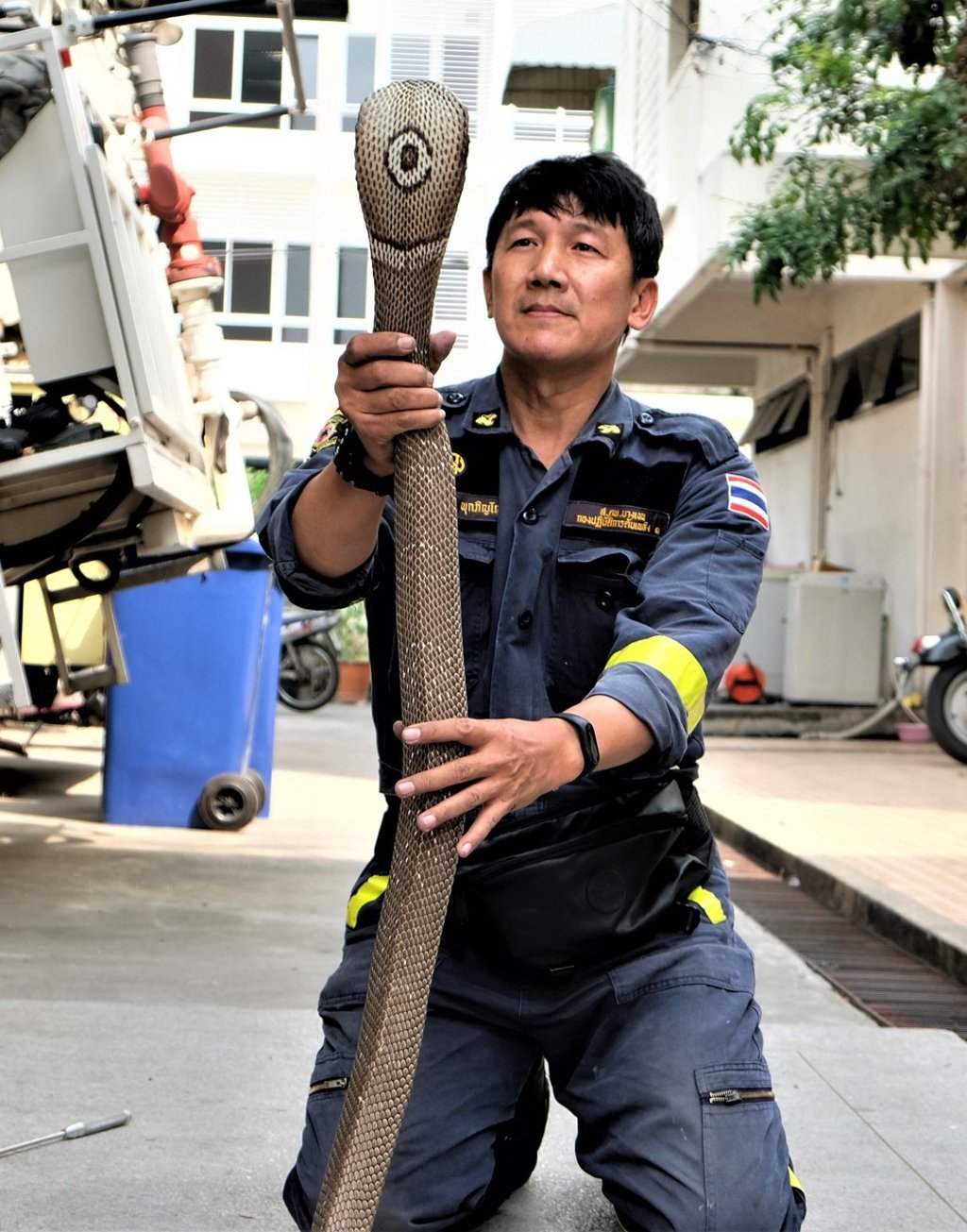The Bangkok firefighter catching snakes that invade homes in the Thai capital
- Pinyo Pukpinyo is called out as many as 10 times a day to deal with snakes that have slithered into homes in Bangkok
- We join him on a day when he is also being followed by a snake enthusiast shooting an episode for his popular YouTube channel

Firefighter Pinyo Pukpinyo receives his first phone call of the day before he has even had breakfast. The woman calling the station has found an unwelcome visitor in her suburban home: a yellow snake.
Pinyo, who is stationed in the Bang Khen district of northern Bangkok, hops into a pickup and off he goes to deal with the intruder. His destination is a town house in a small street a 20-minute ride away.
The woman, 62-year-old housewife Somporn Inchoowan, is visibly distressed. Somewhere in her front room, where she keeps numerous songbirds in wicker cages, a snake is hiding.
“I noticed the birds were getting startled so I took a look,” she tells the firefighter. “I saw a snake slithering up to a cage. I’m really scared of snakes.” “With those birds around, you’d better get used to them,” Pinyo replies.

Somporn doesn’t dispute that. A few days earlier, she discovered a reticulated python curled up on a ledge above the roll-up door of her front room. “We’ve had several snakes,” she says. “The birds alert me when another one is in the house.”
Her home is far from the only one in the Thai capital frequented by snakes. Last year, about 37,000 home intrusions were reported around Bangkok – or more than 100 a day.